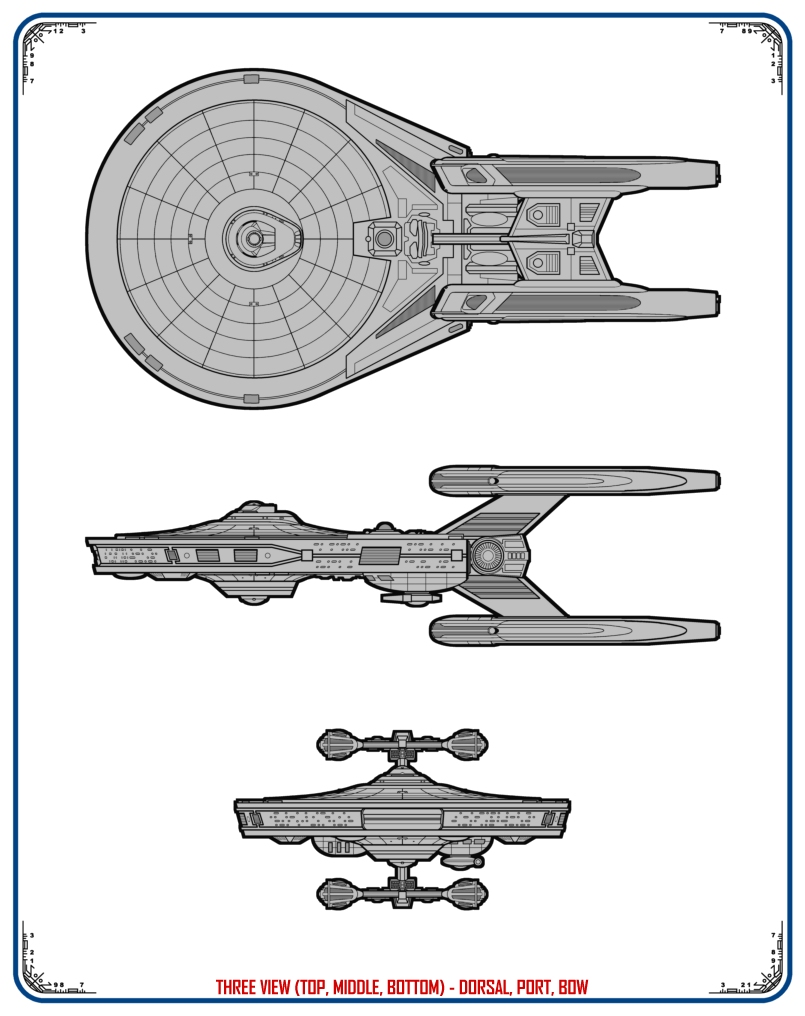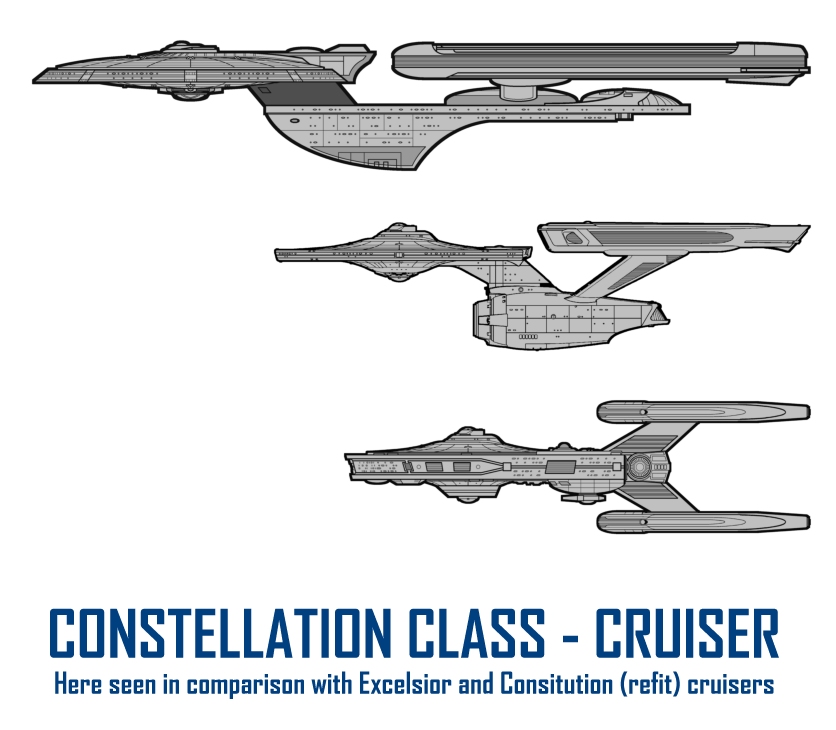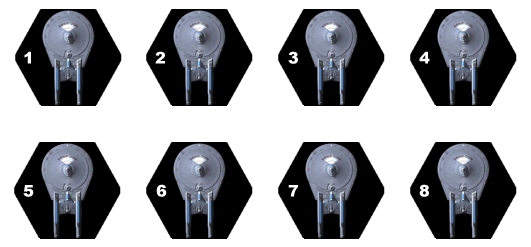![]()
Constellation Class ● Missile Cruiser ● United Federation of Planets

![]()
Constellation Class ● Missile Cruiser ● United Federation of Planets

|
TWO DIFFERENT CONSTELLATION
SCHEMATICS APPEARED in two different FASA publications. The first was seen
(click here) in the TNG Officers Manual,
and was little more than a
Constitution Refit saucer adorned with a flimsy set
of dorsal and ventral warp pylons capped by slightly-altered FWG-style warp
nacelles. I suspect the artist who created this first schematic had little
or no
official material from the TV show upon which to base the Officers Manual
schematic, as the thickened, somewhat teardrop-like shape of the main hull is
ignored, surface structural differences between the original Consitution Refit
saucer and the actual Constellation saucer are nowhere to be seen, and the
nacelles are aligned in a familiar vertical fashion, instead of horizontal as
they are on the actual model of the ship used for production shooting.
FASA got it almost right with the second version from the TNG First Year Sourcebook: correctly reflecting the teardrop hull when viewed top-down, the overall
design of the nacelles and their alignment, and the thickened main hull, with
side-on detailing to match. However, FASA still missed
the impulse decks and unusual ventral structure details which are aft of the
ventral saucer bulge; details which have been the topic of much fan conjecture since the class first
appeared. — BRT |

|
Construction Data: |
|
|
|
|
|
|
Hull Data: |
|
|
|
|
|
|
Equipment Data: |
|
|
|
|
|
|
Other Data: |
|
|
|
|
|
|
Engines and Power Data: |
|
|
|
|
|
|
Weapons and Firing Data: |
|
|
|
|
|
|
Shields Data: |
|
|
|
|
|
|
Defense Factor- |
193.76 |
193.76 |
unknown |
unknown |
unknown |
* Denotes completely hypothetical model number and stats, devised by Brad R. Torgersen.

CLICK HEX GAME PIECES TO VIEW AND PRINT SEPARATELY